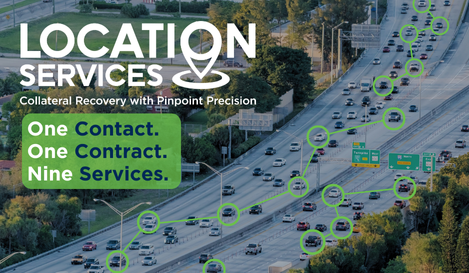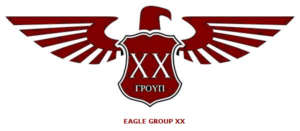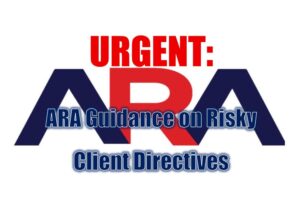For some recovery agencies, training is simply a matter of checking the box. It’s about providing the minimum education necessary to avoid legal risks and fines associated with noncompliance.
For other recovery agencies, training goes a step further. It’s designed to support the needs of the agency—not only mitigating risk, but also improving efficiency, nurturing workforce culture, and boosting employee engagement.
As members of the Eagle Group, we are aware of which approach works better?
All Good Training Relies on the Same 4 Principles
The truth is that most recovery agencies with lackluster, dull, or out-of-date training know they have a problem. It’s just that the problem seems time-consuming and expensive to solve. And it’s rarely the first concern on anyone’s list. Given the choice between facing potential regulatory action and implementing a new learning management system from the ground up, many agencies typically choose the intangible risks over the tangible costs.
Fortunately, as a member of Eagle Group this is a choice you don’t have to make. Any member agency of Eagle Group can easily and cost-effectively improve employee training. You don’t need to buy a million-dollar eLearning or hire a team of educational consultants. All good training is based on 4 principles or best practices.
- Know your employees
- Use real-life examples
- Assess prior knowledge
- Promote behavioral change through repetition
Let’s start with the first and most important tip:
Training Best Practice #1: Know Your Employees
This is the essential ingredient in any approach to training. Without it, content, technology, and processes don’t matter. If the training isn’t engaging, it doesn’t work.
All effective training is centered on the learner. Knowing your employees means understanding the individual or group taking the training.
To get to know your employees, you’ll need to answer a few questions. Whether we’re talking a single employee or a 50-person department, the same considerations apply:
- What is the employee’s education level?
Meet your employees where they are. Don’t give people education they can’t understand or, conversely, is too simplistic to offer value. The training modules designed by Eagle Group utilize an adult learning standard of 12th-grade language. Of course, there are instances when that standard needs to be raised or lowered. In some cases, an employee population may be less literate—which would necessitate a training approach that doesn’t rely on text.
- What is the employee’s range of experience?
Make sure the training is relevant to the employee’s knowledge and expertise, or lack thereof. Sometimes, it needs to be targeted to experienced, on-the-job professionals. Other times, it should be targeted toward entry-level personnel. And then there are times when the curriculum needs to speak to people with a wide range of experiences.
- What motivates your employees?
Training needs to be engaging. Carefully consider format and content. Again, think about your specific employee: What kinds of lessons and activities do they find easiest or most intuitive? What’s most interesting?
- Are there cultural considerations to keep in mind?
Your training should reflect your employee’s perspective and experience. Diversity matters—not only in what images are presented, but the kinds of real-world examples offered to support a topic. White, English-speaking men shouldn’t be the only people your training programs encounters.
Training Tip #2: Know How They Learn
Not everyone learns in the same way.
Some people are visual learners—they absorb information best by reading text and seeing images.
Other people are auditory learners—they learn better by listening and through discussions than they do by reading.
Others are tactile learners—they prefer to use their hands in ways such as sketching, putting together puzzles, or manipulating objects (e.g., building blocks, scale models).
Then there are kinesthetic learners, people who learn by doing—moving their bodies, driving vehicles, loading vehicles on rollbacks, working through simulated problems with dollies, and so on.
Training should ideally be provided with all these styles or modalities in mind. Although most people are drawn to a single learning style, it’s not uncommon for an employee to gravitate to two or more. Plus, different formats help with reinforcement and retention.
Training Tip #3: Know What Motivates Them
Just as they have different learning styles, people also have different motivations for learning:
Winning/dominating. Many people enjoy competition. They want to beat their co-workers and achieve the number one spot on a list—for example, as the field agent with the most assignments closed in a month.
Socializing/networking. Instead of competing, some people would rather have conversations and collaborate on solutions together. For instance, employees of this category may prefer a panel discussion where employees can exchange ideas.
Achieving. Some employees are goal-oriented without the competitive or collaborative element. They want to accomplish things and see positive results. For these employees, training should incorporate opportunities to solve real-world agency challenges and demonstrate excellence.
Exploring/collecting. Finally, some of the agency employees enjoy the thrill of discovery above all else. They like to find things, bring new ideas to light, and chart the journey from “here” to “there.” A dynamic, progress-oriented curriculum appeals to these sorts of employees.
As members of Eagle Group XX/USA our goal is to continue improve our recovery agency’s training program as quickly and cost-effectively as possible.
That is the reason the members of Eagle Group XX have designed and continue to update cornerstone training modules of FACT (Field Agent Compliance Training), SECT (Support Employee Compliance Training), SACAT (Situational Awareness & Confrontational Avoidance Techniques, and the 12 modules of ARC (Annual Regulatory Compliance) CE training.
All education and training modules are available to Eagle Group XX/USA members at NO COST.
If you wish to obtain these training modules, please email me at Rbrown@CSI-ARM.com
All Good Training Relies on the Same 4 Principles – Eagle Group XX – Eagle Group XX – Repossess – Repossession – Repossession Agency – Repossessor
















Facebook Comments